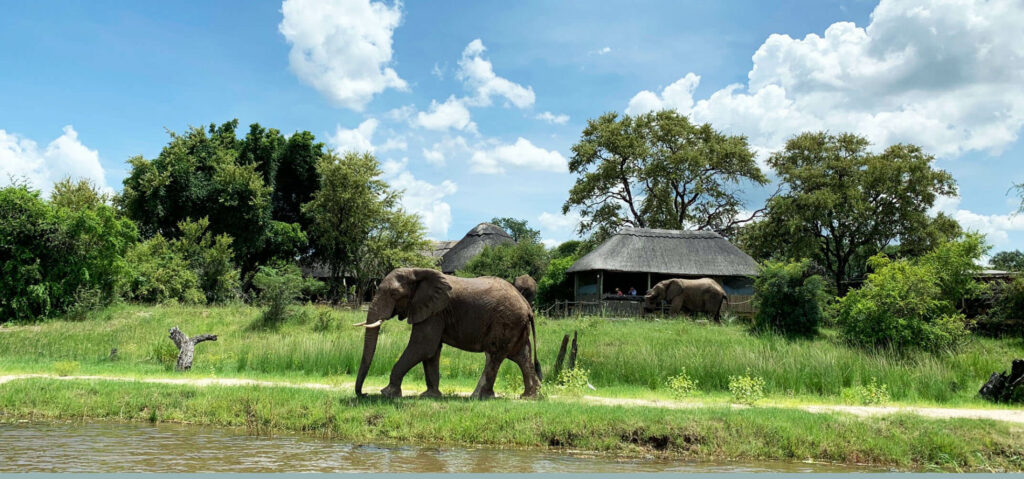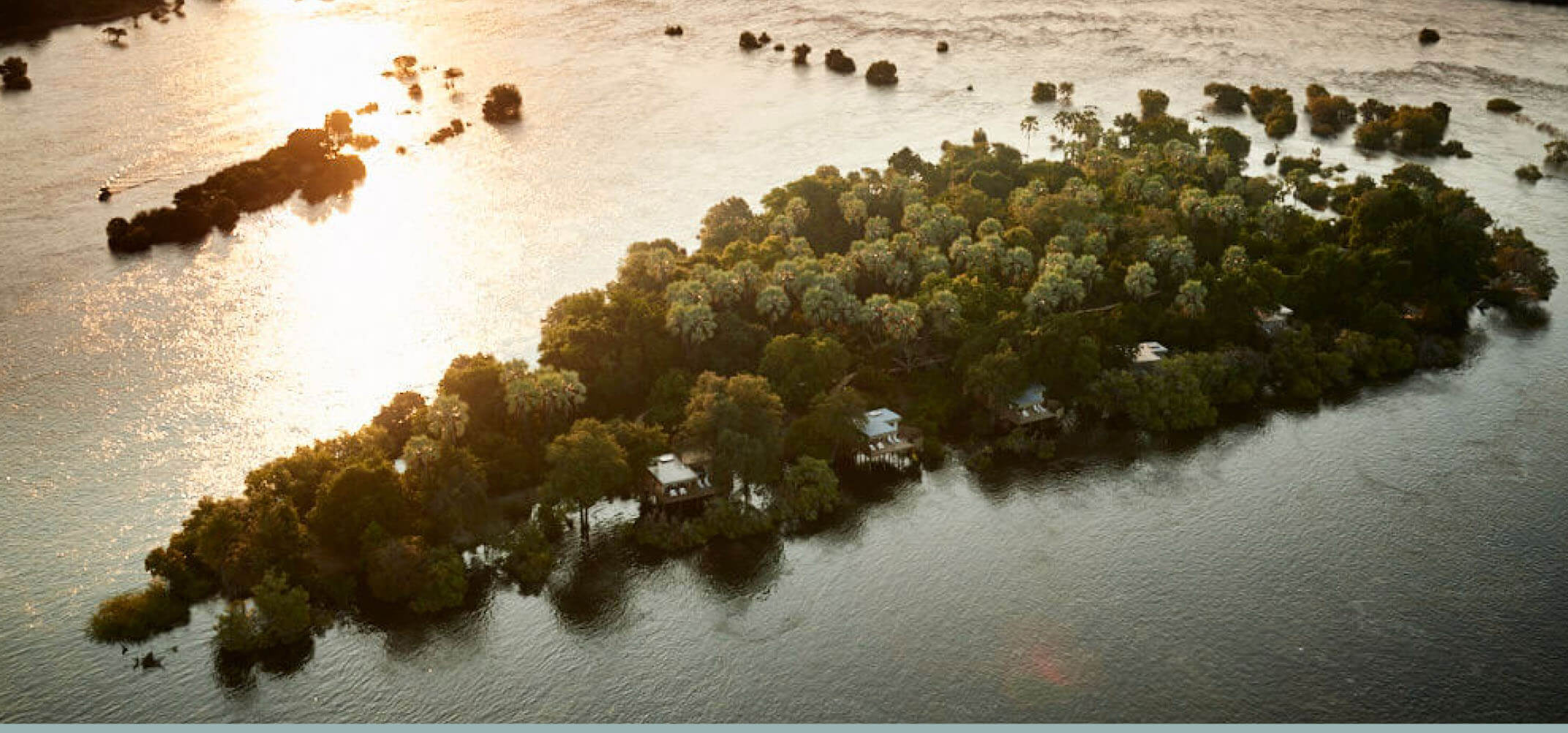In the years to come March 2020 will be remembered as the month of the Coronavirus, and how it spread its enormous economic, social, and political impact around the world.
When you live on a tiny island in the middle of the Zambezi River, it’s very hard to grasp the scale of what is happening and how it has affected us here.
Our forward bookings held much promise for a very good season, but cancellations have been almost total for the next few months. This seems unjust, given that holidaying in very small lodges in the bush ought to be, from what we know thus far, one of the safest places on the planet. We are also entering the prime time of the year in terms of weather and the volume of water going over the Falls gets to a maximum soon, which makes the absence of guests even sadder.
Roddy (our Group General Manager) took his family to the waterfall on Sunday and saw only two other people inside the Rainforest. Virtually all regional and international flights into and out of Victoria Falls have been cancelled. Some big hotels have closed their doors completely. We are, for now, operating a skeleton staff and doing maintenance jobs.
Around the middle of the month, I started to notice large branches floating down the river past us. The river is also rising alarmingly quickly now. Both these are indications that the giant flood from upstream is starting to manifest itself here. As I have said in previous blogs, it is a true privilege to live on the banks of a big, free-flowing river. Its rise and fall through the course of every year herald the changing of the seasons, and we watch with anticipation and some trepidation to see how high the Zambezi gets this year.

River-flows at Chavuma, that were in recession, are rising again following increased residual runoff from the headwater sub-catchment area. The flow closed the period under review at 3,711m3/s on 23rd March 2020, while the flow observed last year on the same date was 761m3/s.
Flows at Victoria Falls have continued to increase steadily during the period under review before closing at 3,133m3/s on 23rd March 2020. Last year on the same date, the flow was 831m3/s. The Zambezi River flows at Victoria Falls are above the long-term mean.

The temperatures in the early morning have dropped a few degrees, and it becomes deliciously cool when the sun comes up. It feels like autumn has arrived early and we are experiencing typical April/May conditions.
As if by magic, the first breeding herds of elephants started to arrive on the Zimbabwe banks of the river in considerable numbers on 8th March, mostly at the hottest time of day.
They appeared delighted to be swimming and playing in the water again, after the rainy months when they move away from the river. This is their time of plenty. Their favourite food is abundant, and they are clearly happy to be back. On 9th March the first elephants of 2020 arrived on the island whilst our guests were having their lunch. The four young bulls had swum and waded their way across the river from the Zimbabwe bank. We hope for more rain still before the season ends in early April, but it is such a pleasure to have the elephants here again.
Our seasonal total thus far is 453mm, and we hope to end the season with 500mm at least. This would give us 85% of average, not great but certainly much better than last season.

I found a leopard tortoise on the road to River Lodge and took its photo. The leopard tortoise is the most widespread in Africa, inhabiting most of the continent except for tropical jungle and desert. They are herbivores and play a significant role in seed dispersal because seeds pass undigested through their gut. They are very long-lived but threatened because of the global pet trade.
Dung beetles have always fascinated mankind. There are 5,000 species of dung beetles, belonging to the family Scarabaeoidea. Scarab beetles were sacred to the ancient Egyptians, and there is even a hieroglyph symbol of one. Nocturnal species have been found to navigate using bright stars and the Milky Way. I loved the vivid colours of these little guys going about their business on the road leading to River Lodge.

Shelf, or bracket, fungus typically grows on fallen logs in damp woodlands. Polypores, and their relatives, corticoid fungi, are the most important agents of wood decay, and a sign of healthy old-growth forests. They play a crucial role in nutrient cycling and carbon dioxide production. Some polypores look like mushrooms.

Most of the Water Berry (Syzygium guineense) trees on the Island are now in fruit, and what an amazingly rich colour the fruit is.
The Northern Ilala Palms are bearing a healthy load of fruit this season and they are still green and ripening. Once the rains are over, they will turn brown and become irresistible to the elephants.
We send our very best wishes to everybody who reads this blog and hope and pray that you, and your families, stay safe through the coming months. We might be waterlogged by the time I write again at the end of April, but we will still be here, ready to show off the beauty of our part of Africa.



